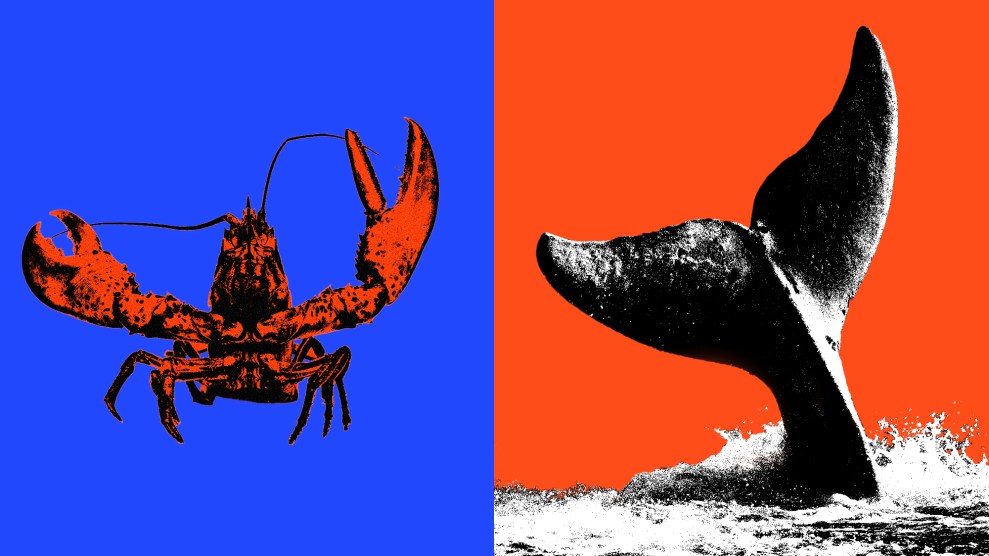
Getty
This story was originally published by the Guardian and is reproduced here as part of the Climate Desk collaboration.
Mysterious whale feeding behavior only documented by scientists in the 2010s has been described in ancient texts about sea creatures as early as two millennia ago, new research suggests.
In 2011, Bryde’s whales in the Gulf of Thailand were first observed at the surface of the water with their jaws open at right angles, waiting for fish to swim into their mouths. Scientists termed the unusual technique, then unknown to modern science, as “tread-water feeding.”Around the same time, similar behavior was spotted in humpback whales off Canada’s Vancouver Island, which researchers called “trap-feeding.”
In both behaviors the whale positions itself vertically in the water, with only the tip of its snout and jaw producing from the surface. Key to the technique’s success, scientists believe, is that fish instinctively shoal toward the apparent shelter of the whale’s mouths.
Flinders University scholars now believe they have identified multiple descriptions of the behavior in ancient texts, the earliest appearing in the Physiologus—the Naturalist—a Greek manuscript compiled in Alexandria around 150-200 CE.
John McCarthy, a maritime archaeologist at Flinders University in Adelaide, South Australia, and the study’s lead author, made the discovery while reading Norse mythology, about a year after he had seen a video of a whale tread-water feeding. He noted that accounts of a sea creature known as hafgufa seemed to describe the feeding behavior. “It really was a coincidence,” McCarthy said.
The most detailed description appeared in a mid-13th-century Old Norse text known as Konungs skuggsjá—The King’s Mirror. It reads: “When it goes to feed…the big fish keeps its mouth open for a time, no more or less wide than a large sound or fjord, and unknowing and unheeding, the fish rush in in their numbers. And when its belly and mouth are full, [the hafgufa] closes its mouth, thus catching and hiding inside it all the prey that had come seeking food.”
The King’s Mirror was an educational text used for explaining the world to young people, McCarthy said. “They exaggerate the size,” but “it’s not a fantastical description with any kind of supernatural elements.” He added that the distinction between fish and marine mammals might not have been well understood at the time.
“Definitive proof for the origins of myths is exceedingly rare and often impossible, but the parallels here are far more striking and persistent than any previous suggestions,” the researchers noted. And “the lack of scientific observations prior to the last two decades might be explained by the relative rarity of this feeding strategy, or alternatively because the strategy was not being used.”
Olaf Meynecke, a research fellow at Griffith University’s coastal and marine research centre, who was not involved in the research, said: “It is interesting that this type of feeding was documented thousands of years ago but described as a new technique in recent years…It shows that such interesting feeding behavior has clearly captured humans’ imagination in the past.”
“The trap feeding very likely only works in the presence of other predators,” Meynecke said, adding that it had been observed in individual whales and was not a social feeding activity. “As it [has a] low energy cost for the whale, this feeding activity makes most sense when there is smaller schooling fish left over after a feeding frenzy.”
Bryde’s whales and humpbacks are both rorquals, a type of baleen whale.
The study was published in the journal Marine Mammal Science.
















